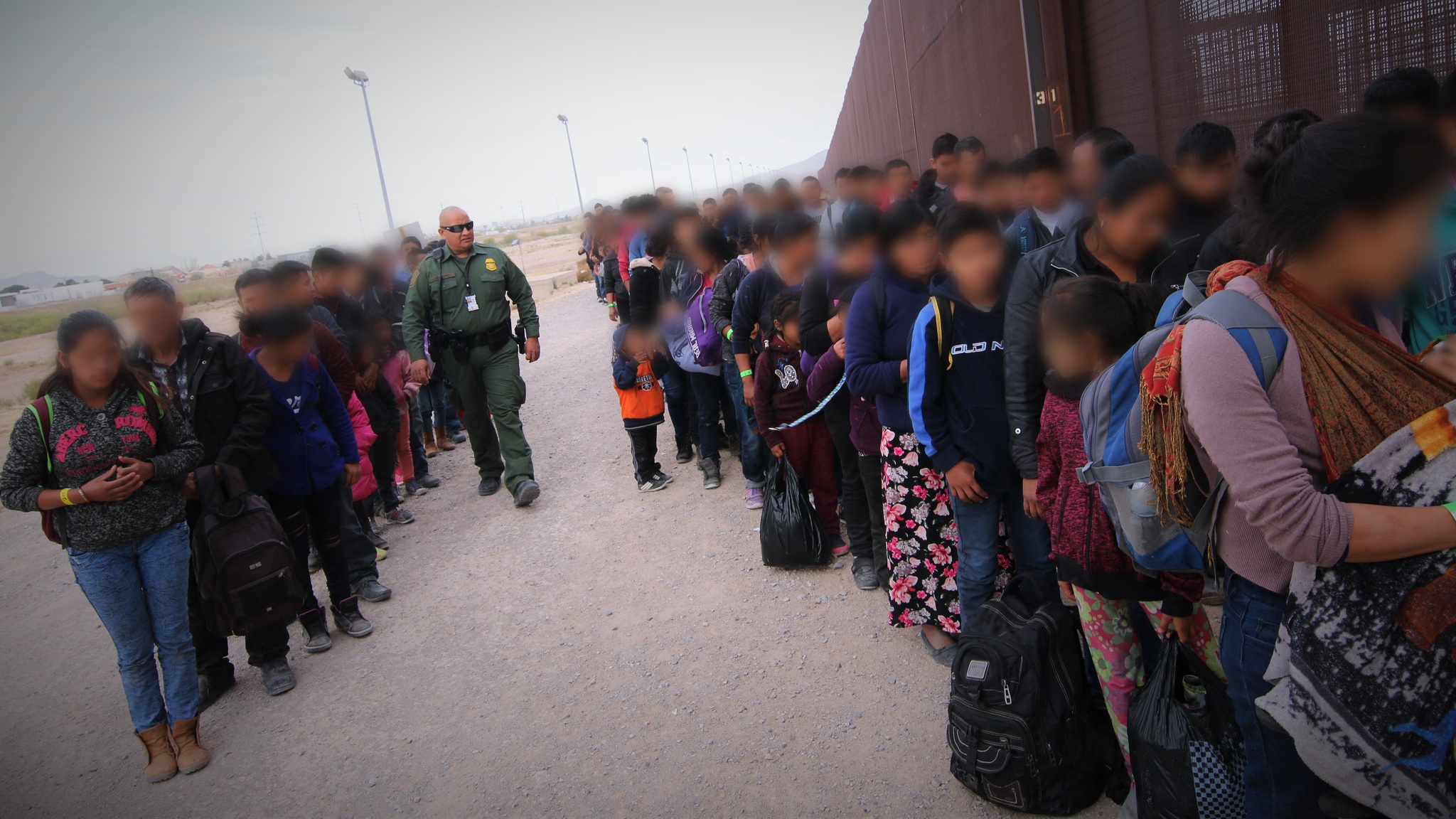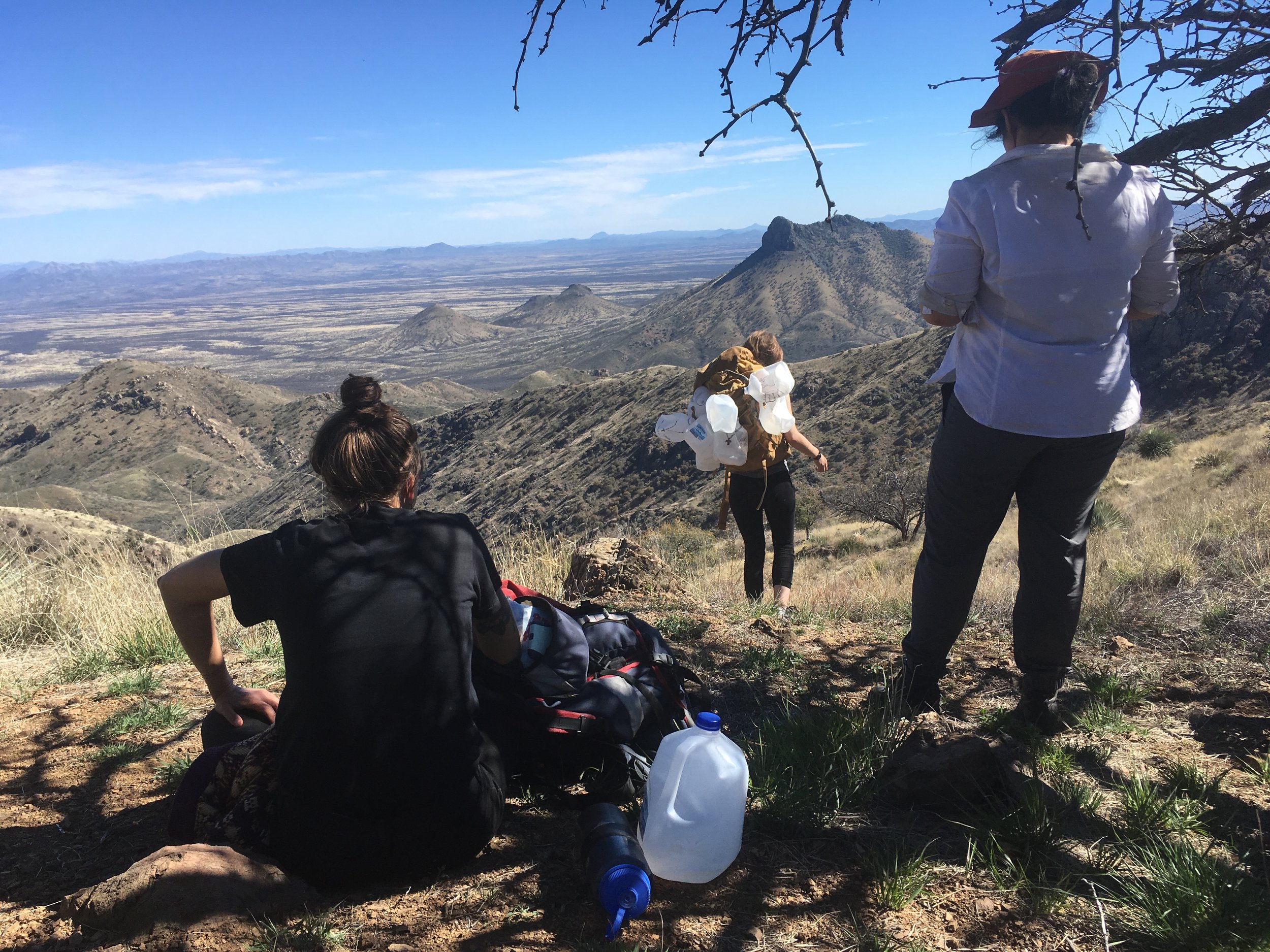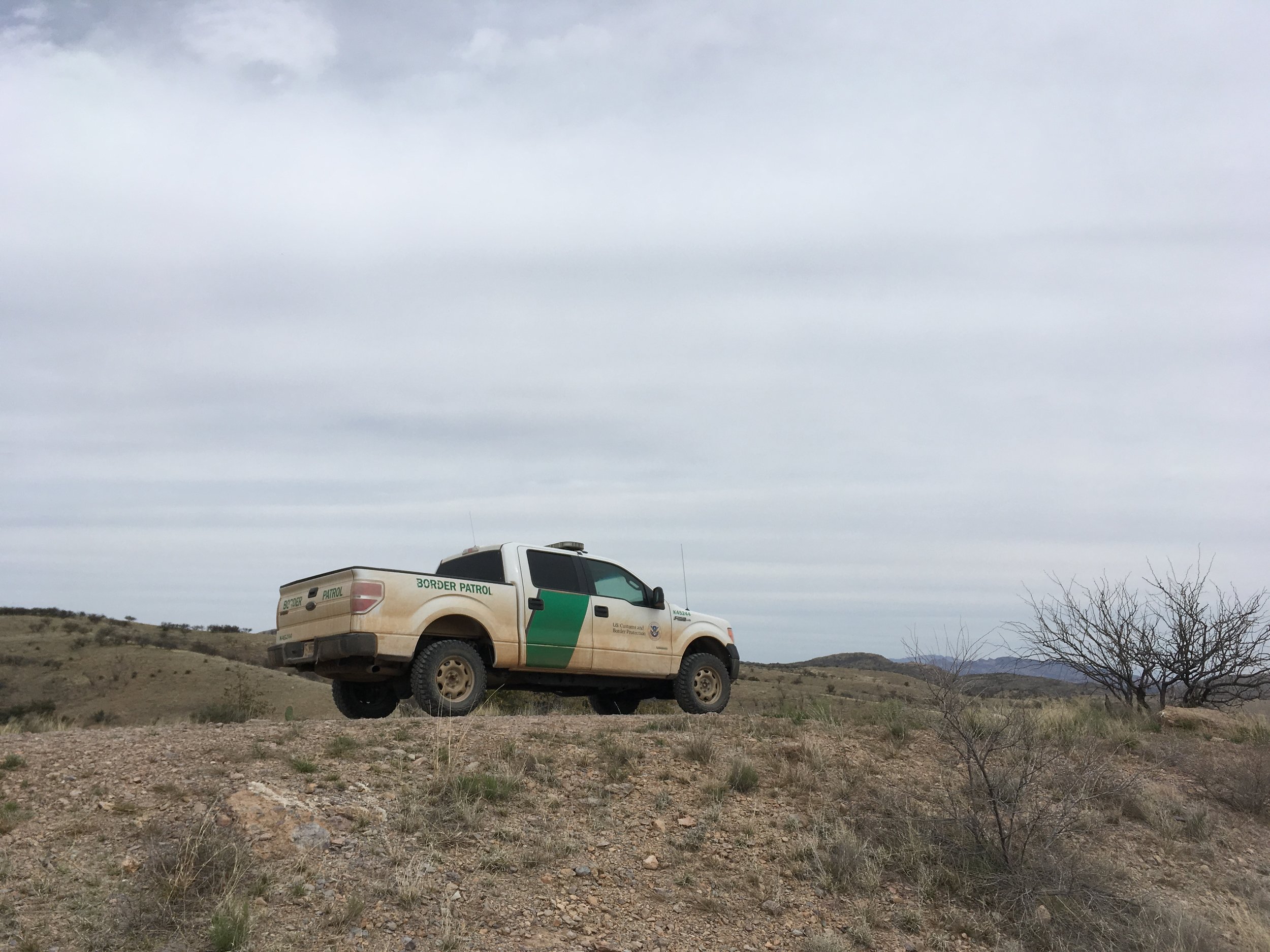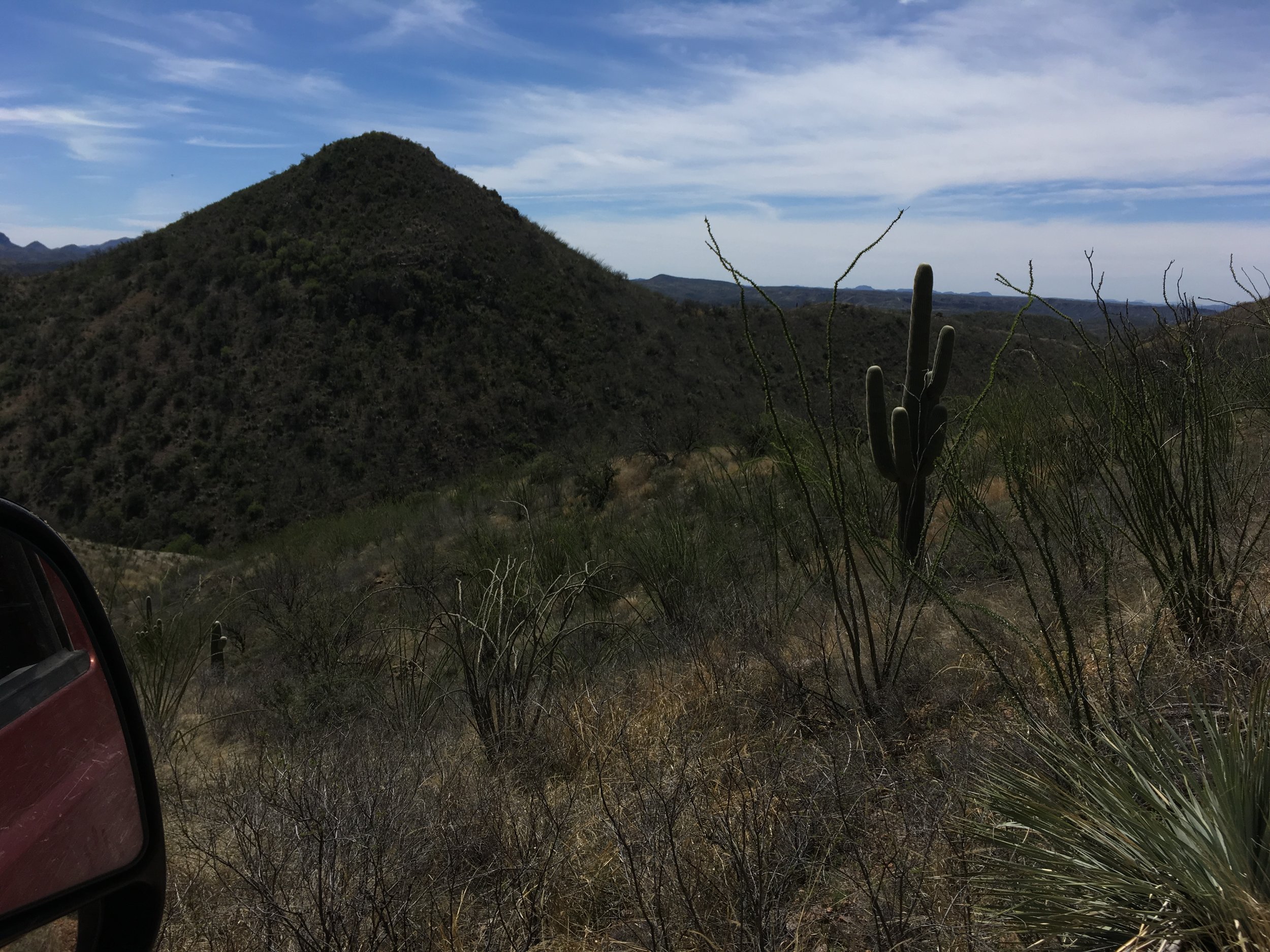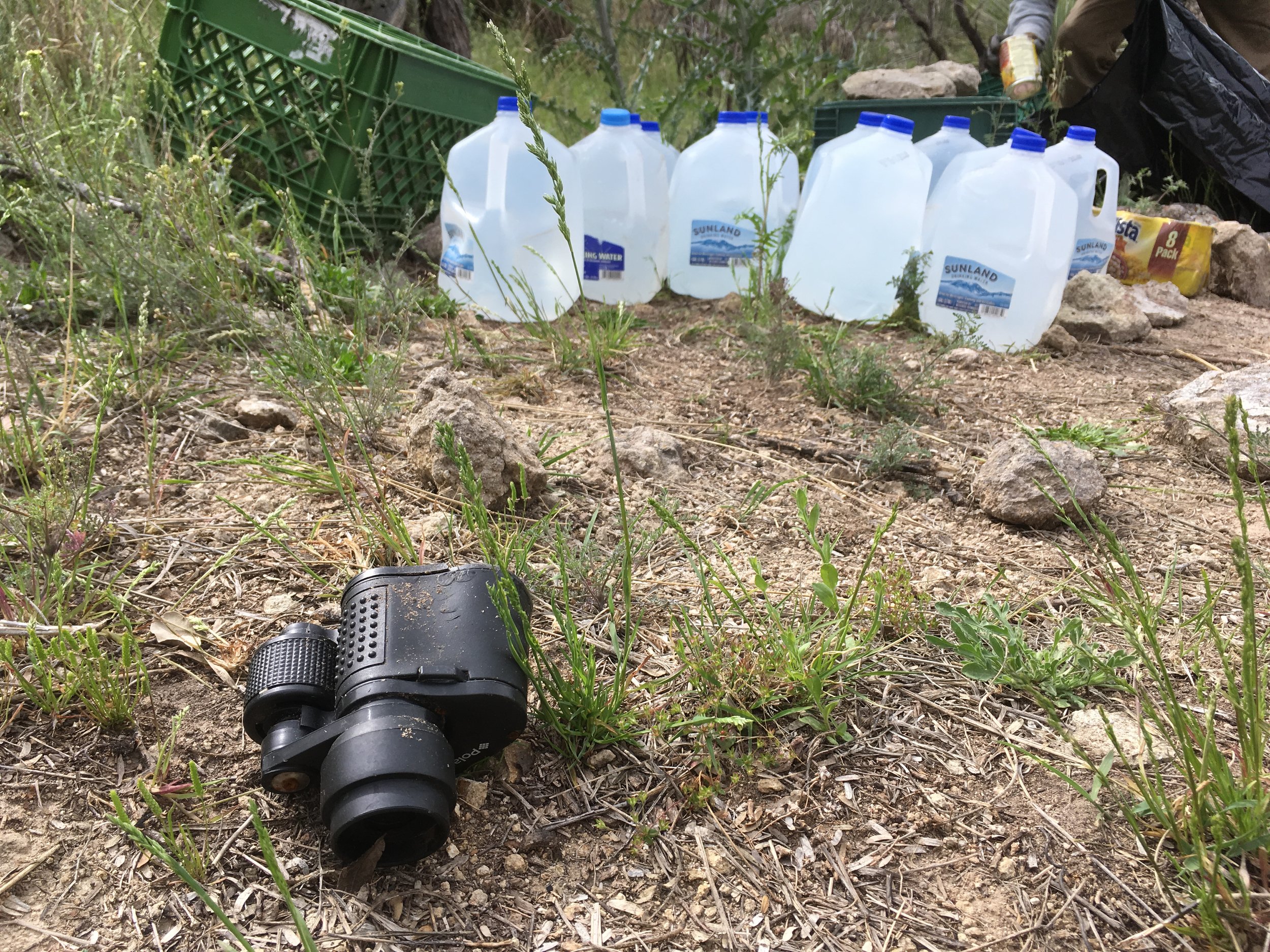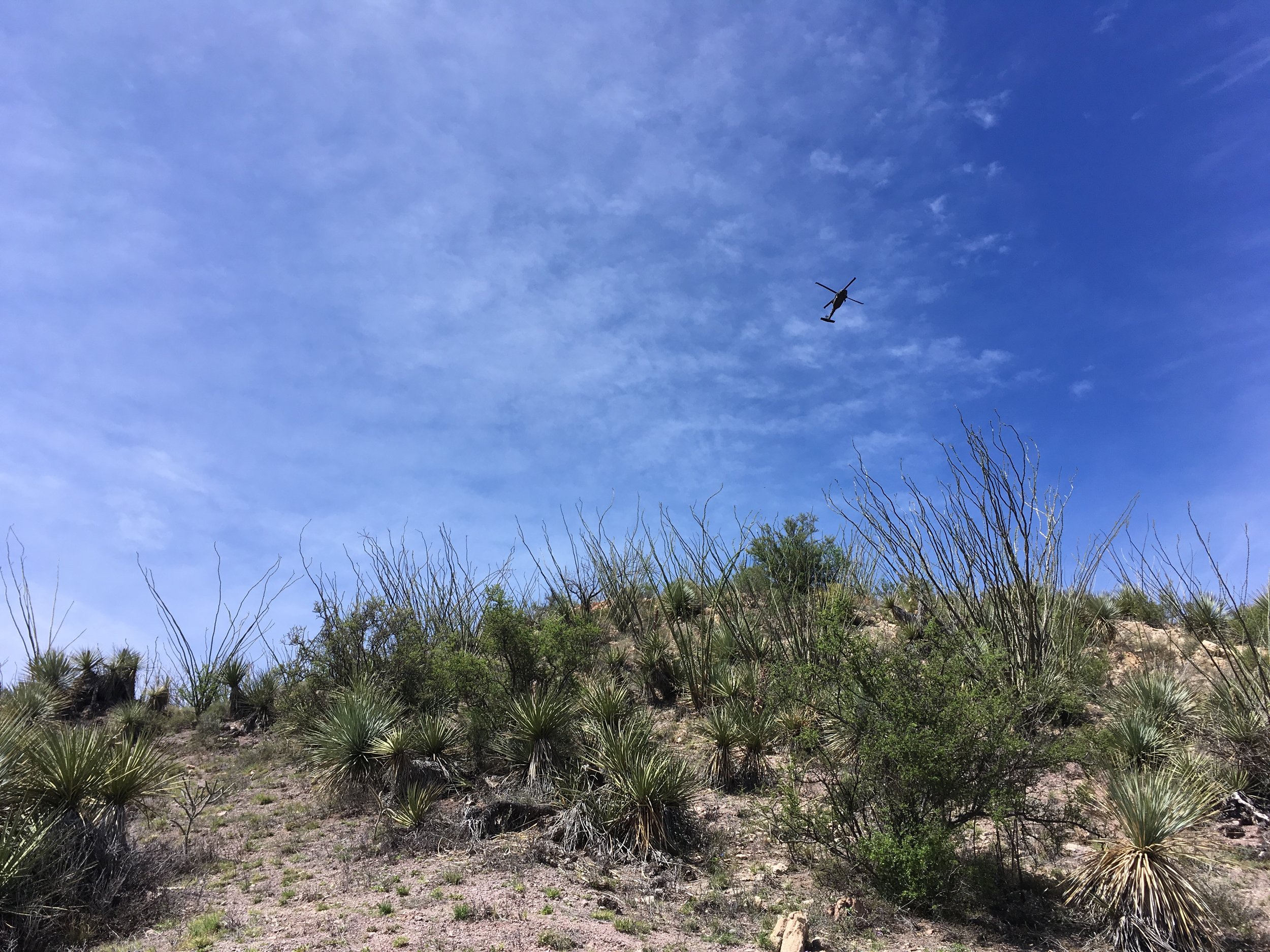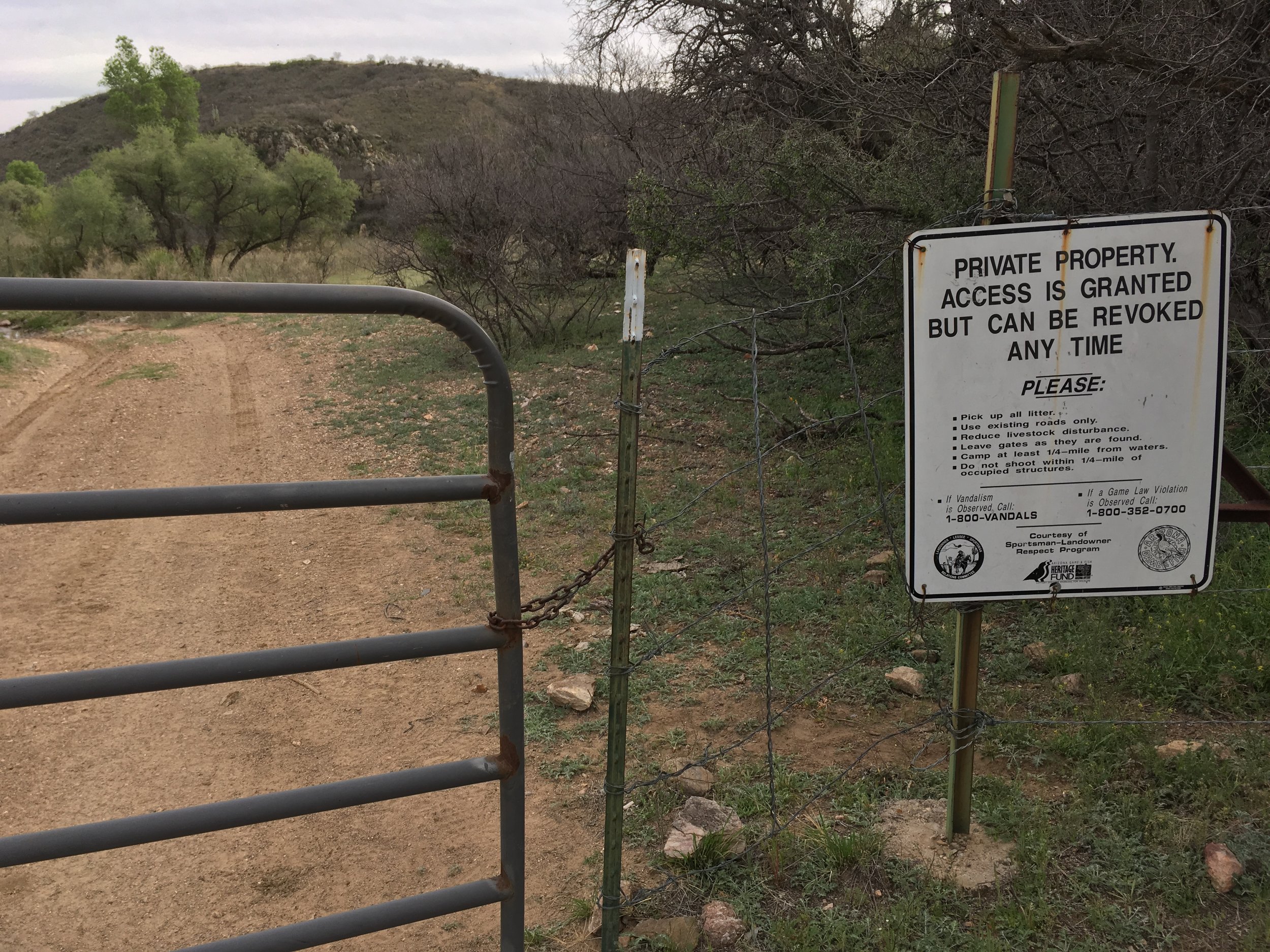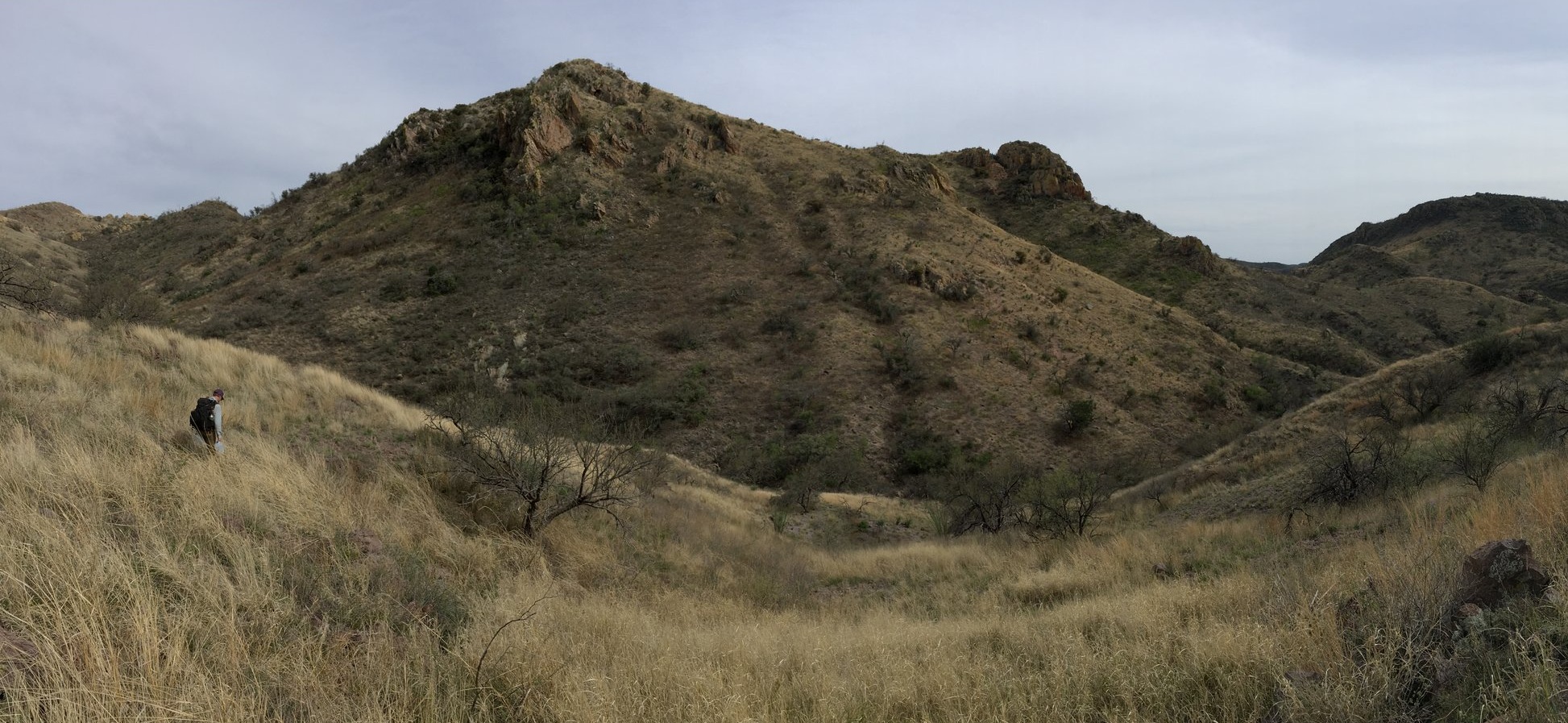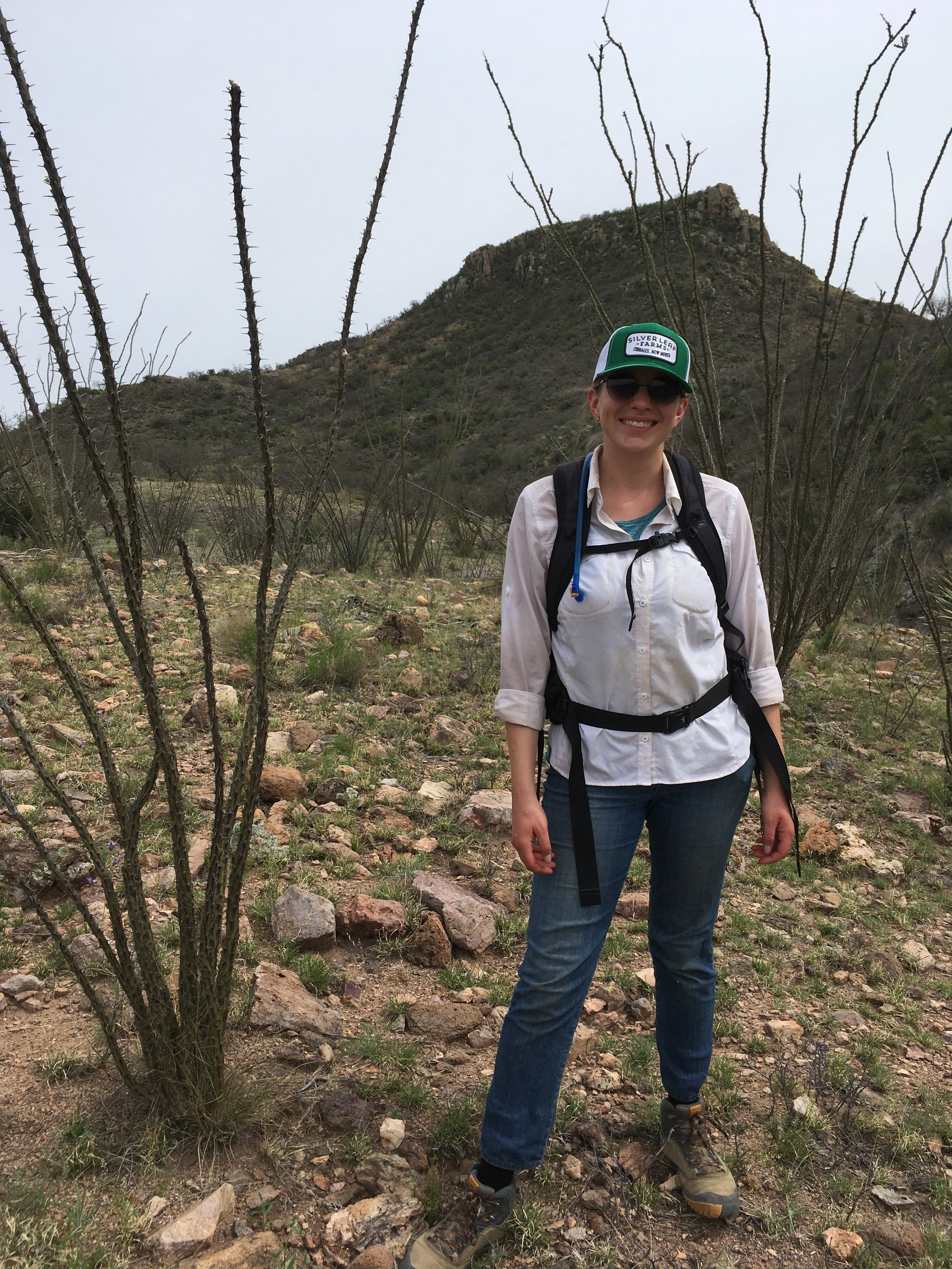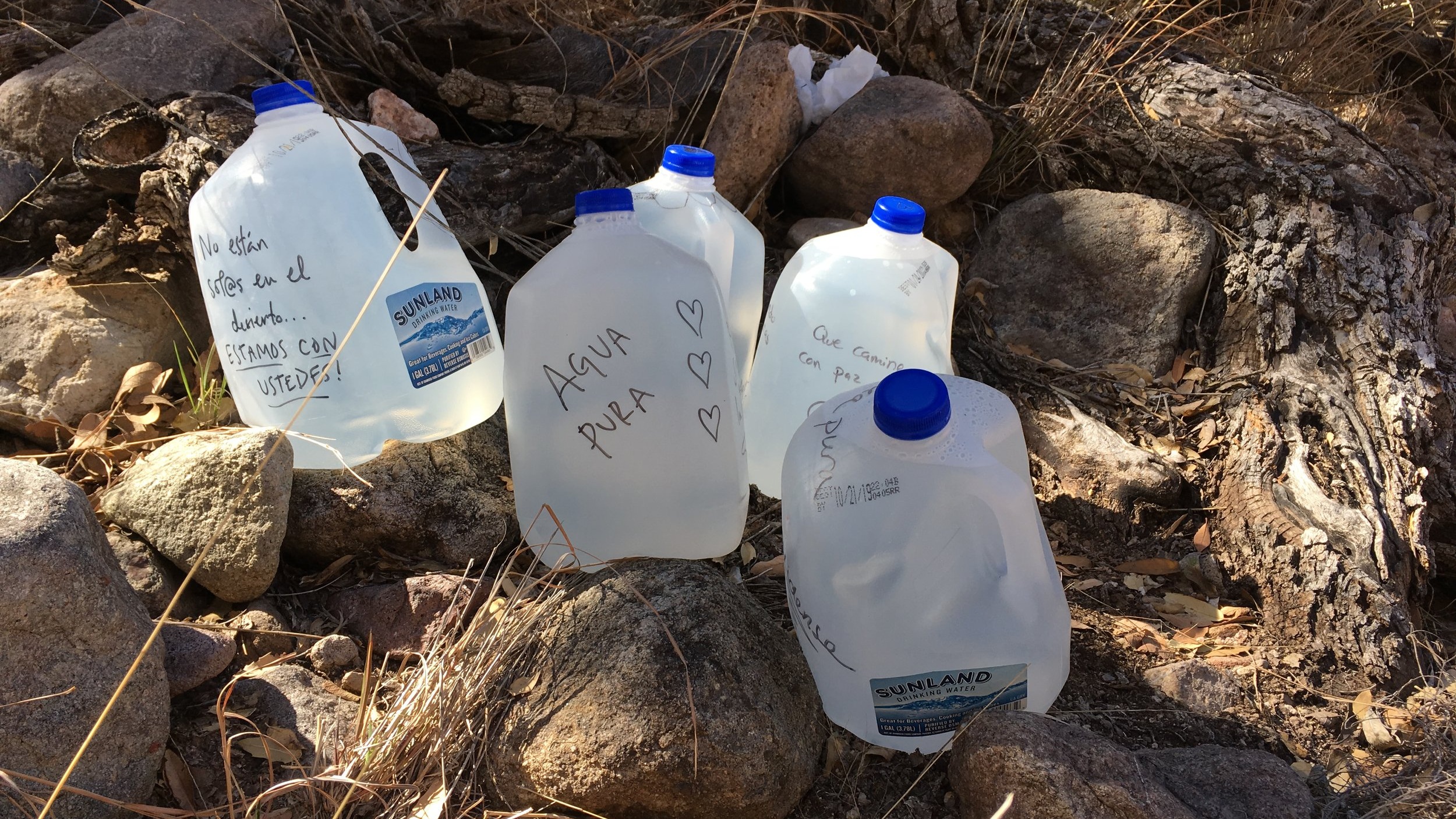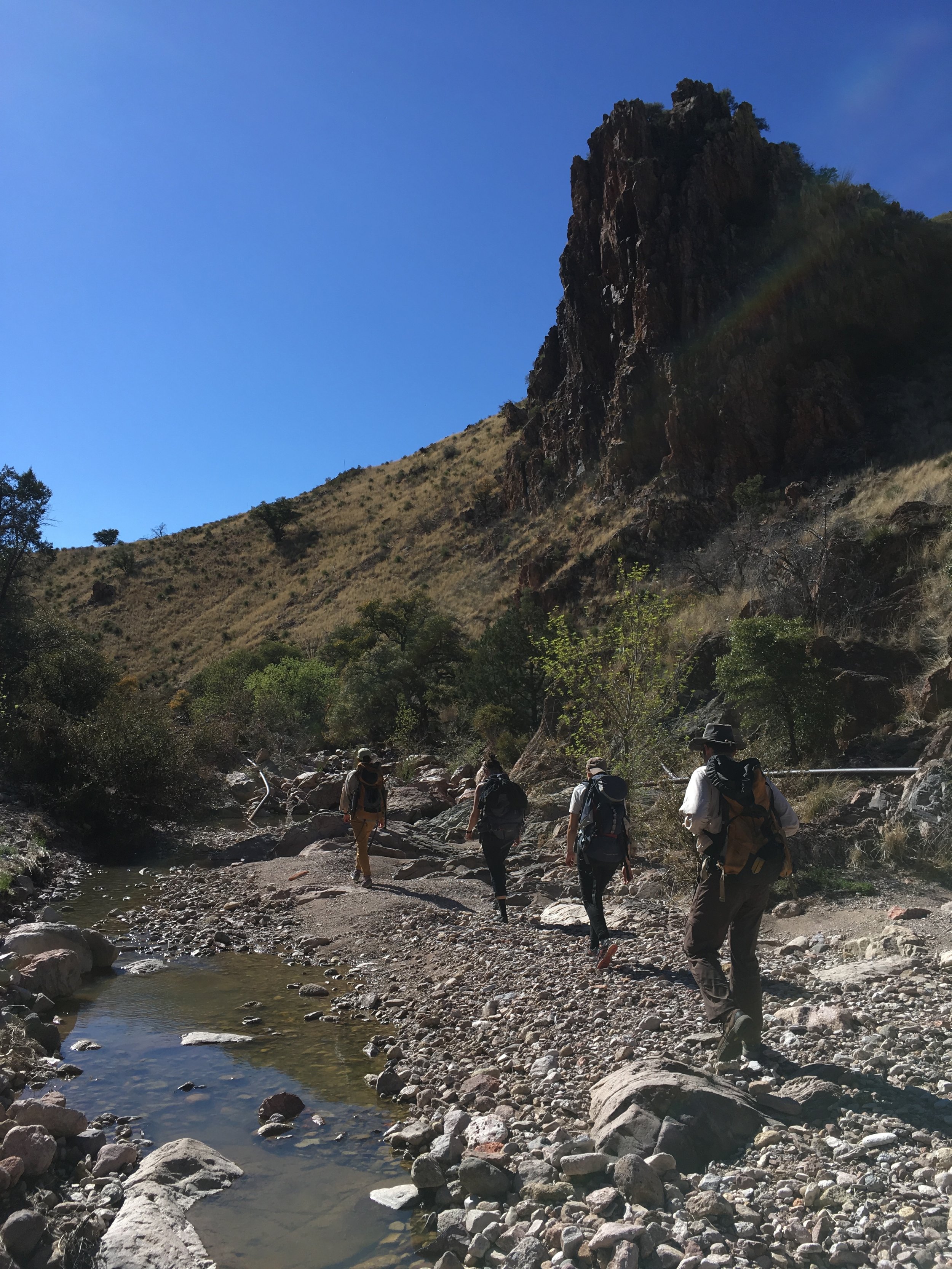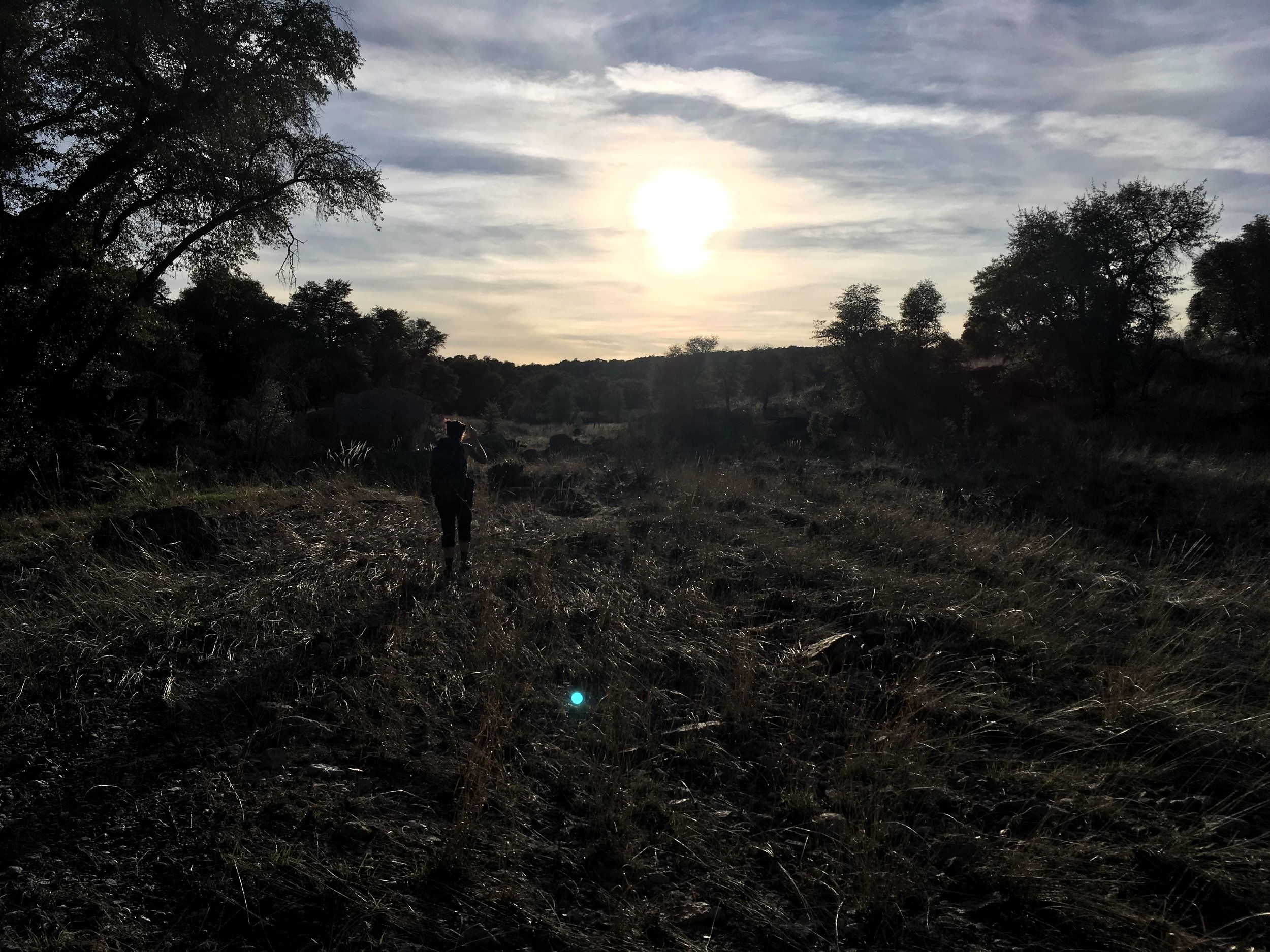Wednesday, 3/27/19, 10:30pm
No More Deaths volunteer week, day 4
journaling by flashlight in my tent once again
Today was hard.
Actually, practically speaking, today was no harder than the ones before and, if anything, easier. Waking at sunrise. Drinking coffee and eating oatmeal with the others. Hopping in a pickup truck with ___ and ___, followed by four more in a second truck. Caravaning past Arivaca Mercantile, ranchers in SUVs, Border Patrol, and what may have been a truckload of clean-camo-wearing militia dudes.
Our destination was Fresnal Canyon, which extends north-south all the way down past the steel vehicle barrier that marks the U.S.-Mexico border here between mountains.
Our mission was to comb the hillsides for a missing person. Not a living person. Or a freshly deceased person. A person’s fleshless skeletal remains.
The bones were seen recently by a man who passed nearby on his own long trek through the desert, sometime in the last week or two or three I think. He told No More Deaths what he could remember: the person had died in the brush a ways off the trail, under a tree, two hours’ walk from the border, past a Border Patrol watchtower, on a hillside maybe 80 meters from a broken windmill.
The week-long volunteers fell quiet as the group’s more experienced facilitators traced their fingertips along map lines and discussed the towers and mills they knew best. They drove. Wherever we parked, we followed their instructions on foot. In our attempts to grid and comb each area, we scrambled up and around rocky slopes and got lacerated by forests of catclaw and ocotillo. Our eyes swept left and right and left over the ground as we walked, searching for a glimpse of… of skull, or clavicle, or rib. Anything human. Anything white.
Every cluster of gypsum-white pebbles hooked our gaze—a fist that had relaxed its lifelong grip and let its carpals and metacarpals crumble apart? No, just more rocks. And more, and more, and more, until we became so accustomed to seeing white rocks that our thoughts would drift just a little and we’d need to remind ourselves why we were looking at white rocks, and then we’d tense up all over again.
At one point I spotted a row of tiny teeth. My heart exploded. A tangle of hot emotions threaded every vein in my body in the instant before my thoughts could catch up and reassure my skin that it was just a coyote’s jawbone. Bones, yes. But not human bones. Not our missing person. Some other creature’s cleaned white remains.
Eventually dusk crept over the day and we had to pack it in. No luck—all we found were a baseball cap and two empty backpacks and a green jacket and old water bottles. Migrants walk here, for sure. But our migrant—the person who stumbled off the trail to rest under a tree for the last time—we still don’t know exactly where he or she died. Or how. Or why. Their name or their story. What mother or husband or child is still waiting and worrying for them somewhere, and will continue to wait and worry, because we can’t reach out to them to break the hard news that their loved one succumbed to the desert.
But maybe we helped narrow down the search for a later day. So there’s that.
Back at camp we lit a fire under the stars. The smoke burned my eyes, but I just blinked it out in thin tears until the wind changed. We didn’t talk about the bones we didn’t find that day, and the more experienced facilitators didn’t talk about the bones and flesh and families they did find on days past. What did we talk about? ___ told stories of how corrupt cops are in Mexico, targeting American tourists to extort bribes instead of tickets for running imaginary stop signs. ___ described the people you meet in these parts during hunting season and the kinds of guns they bring. We talked about the crazy-ass militias camped out here with us and against us, and how the Border Patrol’s Twitter feed obsesses over football, and why Arizonans hunt coyotes with AR-15s. It was nice, being hypnotized by the flames and laughing about all the strange little ways the world is screwed up around us.
The night was smoky and slow until, all at once, everyone agreed how tired we were. Within minutes we were all turning in at our separate tents.
Tired—bone tired. Bone tired from bushwhacking through thorns for hours in search of bones. Scratched up and worn down. Sweaty and dirty and ready to sleep in our own sweat and dirt because why not, that’s what bodies do. Lie down in the dirt to sleep or to die, depending.
The stars are out and the coyotes are snickering out there, the skinny little rascals. Be careful, little guys, of rifles and truck tires and dehydration. Will you sleep tonight, coyotes? I will. Tonight my body will sleep so tomorrow it can wake and work to keep others from dying another day.







